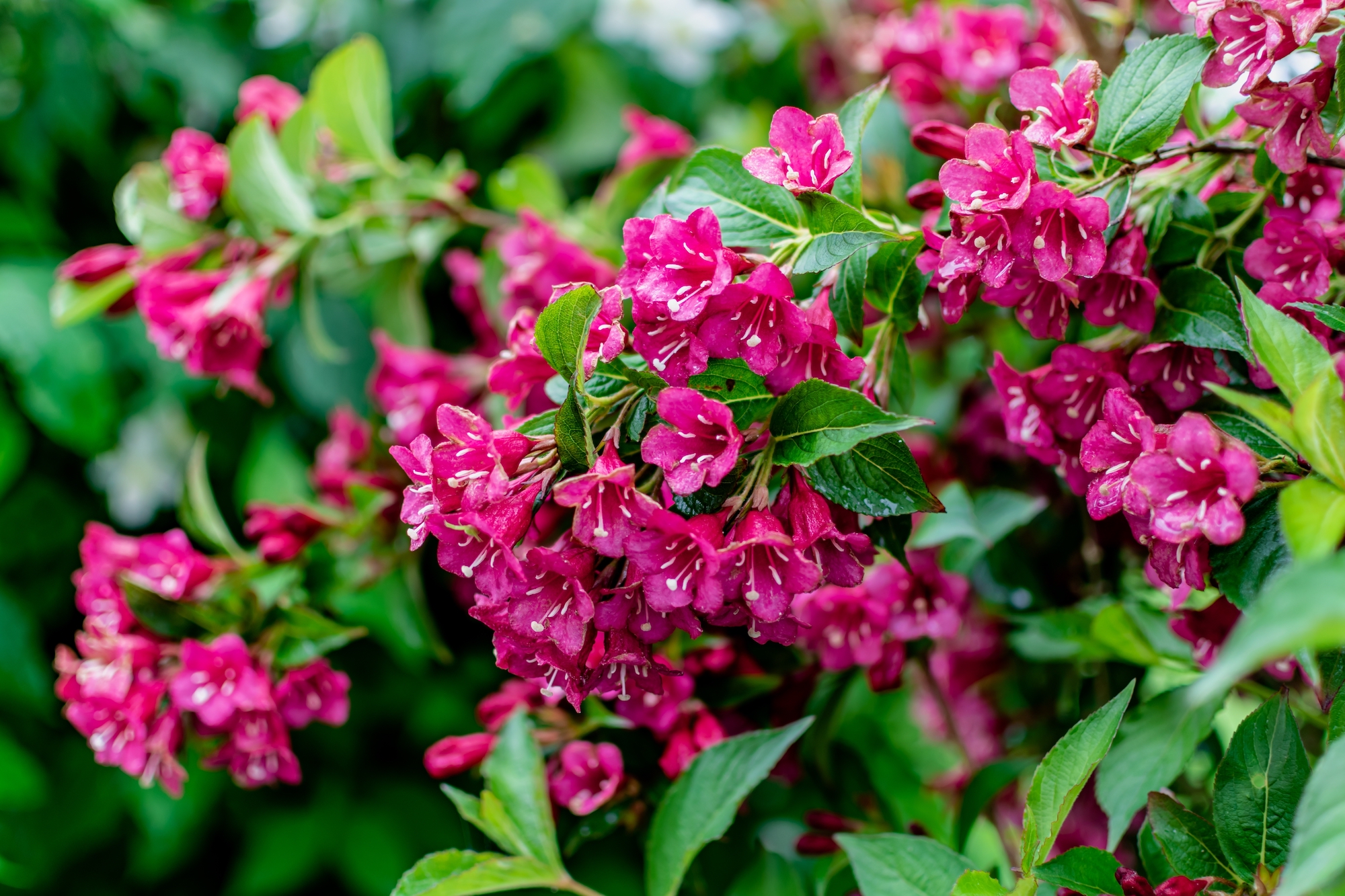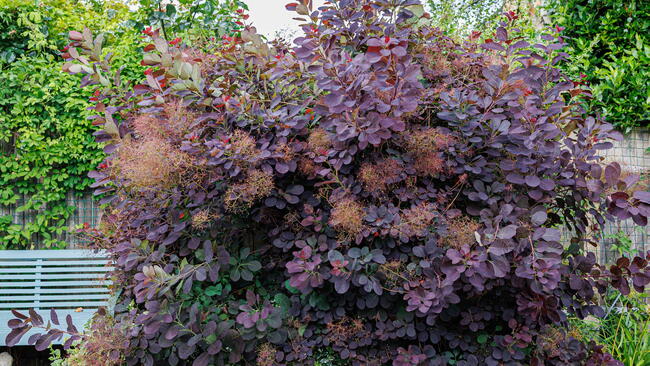
Photo Credit
Billysfam
Botanical Name
Weigela spp.
Plant Type
Soil pH
Bloom Time
Special Features
Subhead
Planting, Growing, and Caring for Weigela Shrubs That Attract Hummingbirds
Read Next
Types
While weigela is often pink and white, we’re big fans of the ruby red flowering varieties. (See more flowers that bloom red.)
- ‘Red Prince’ is a compact mid-sized shrub, reaching about 5 to 7 feet tall and wide. Its deep, ruby-red blooms are a spot of intense color in the spring landscape, and it is a good rebloomer later in the year. It’s also quite cold hardy, and it regularly survives Zone 4 winters with little damage.
- ‘Wine and Spirits’ is a dark-foliage variety with creamy white flowers. Dark purple foliage covers an arching form, providing interest after the flowering time has passed. It’s hardy in USDA Zones 4 to 8.
- ‘My Monet’ is a variegated foliage dwarf variety that reaches about 2 feet tall. It does well as a low-border planting or in containers. Foliage is mint green and white, with pink blooms in spring and again later in summer. It also works as an effective ground cover and tolerates shade more than other varieties.
- ‘Bristol Ruby’ grows more upright than most weigelas, which can tend to look messy if not pruned. It’s very hardy and well-formed, and blooms crimson flowers in late spring and early summer.











Comments